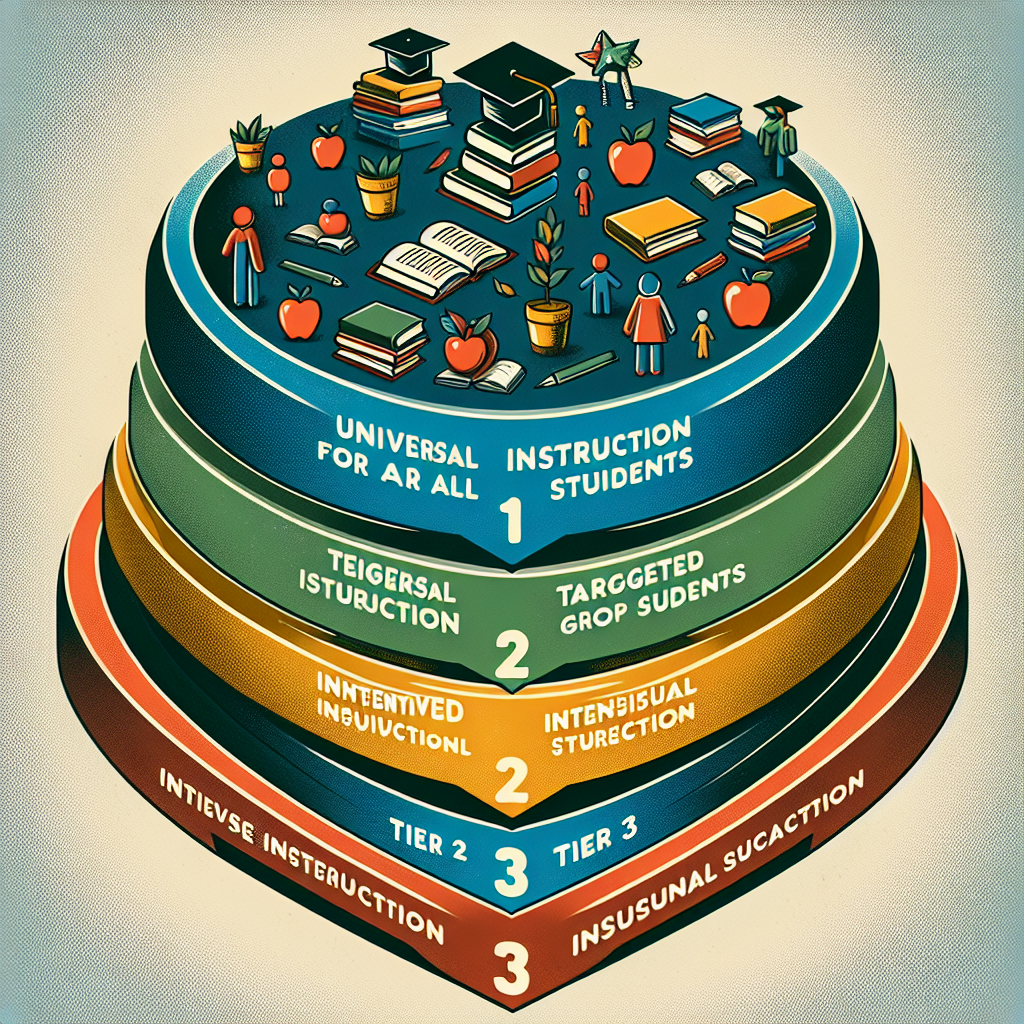Introduction
Imagine walking into a classroom where every student is thriving, where each child’s unique learning needs are met with precision and care. This vision can become a reality through effective implementation of Response to Intervention (RTI). At its core, RTI is a multi-tiered support system designed to provide targeted assistance to students who are struggling academically or behaviorally. As educators, the stakes are high—failing to address student needs promptly can have long-lasting effects on their educational journey. In this article, we will delve into Response to Intervention: Best Practices for Implementing Tiered Support, ensuring that by the end, you’ll have a robust framework to enact meaningful change in your educational setting.
Understanding the Foundations of RTI
What is Response to Intervention?
Response to Intervention is not just a buzzword; it’s a systematic approach that identifies at-risk students and provides them with immediate support. RTI operates on several tiers, each tailored to meet diverse needs:
- Tier 1: Universal Level – This is the foundational layer where all students receive high-quality instruction.
- Tier 2: Targeted Level – Here, students identified as needing additional support receive targeted interventions.
- Tier 3: Intensive Level – This tier is reserved for students who require more individualized interventions.
The Importance of Tiered Support
The tiered approach ensures that educational support is not one-size-fits-all. Statistically, early intervention can lead to significant improvements in student outcomes. According to a study from the Institute of Education Sciences, students who received early and targeted interventions demonstrated a 30-80% increase in achievement compared to their peers.
Best Practices for Implementing Tiered Support
1. Establish a Collaborative Team
Building a team of educators, administrators, and relevant stakeholders is essential for successful RTI implementation. Collaboration fosters a shared vision and collective responsibility for student success.
Case Study: The Collaborative Approach at Lincoln High
At Lincoln High, a collaborative team approached RTI with vigor. They held weekly meetings to discuss student progress, analyze data, and strategize interventions. Consequently, they noted a 40% decrease in the number of students requiring Tier 3 support.
2. Data-Driven Decision Making
Utilizing data effectively is crucial in identifying student needs. Regular assessments and progress monitoring tools can provide insights into student performance, enabling educators to adapt instruction based on evidence.
| Assessment Frequency | Purpose | Outcome |
|---|---|---|
| Universal Screening | Identify at-risk students | Early identification |
| Progress Monitoring | Measure intervention efficacy | Adjust interventions |
| Summative Assessment | Evaluate overall performance | Inform instructional changes |
3. Effective Instructional Strategies
Implementing evidence-based instructional strategies is the heart of Tier 1. These strategies should be inclusive, engaging, and differentiated to meet all learners’ needs.
Case Study: Differentiated Instruction in Action
During a science unit at Riverdale Elementary, teachers created stations based on student interest and readiness levels. As a result, engagement levels soared, and 75% of students demonstrated mastery by the end of the unit. This not only exemplifies tiered support but also highlights the efficacy of differentiating instruction.
4. Continuous Professional Development
Ongoing training for educators ensures that they remain informed about the best practices related to RTI. Facilitating workshops and collaborative sessions allows educators to share insights and strategies.
5. Family Engagement
Involving families in the RTI process fosters a supportive environment for students outside school. Regular updates and open lines of communication can empower parents and caregivers to support their children’s learning.
Case Study: Family Engagement Initiative at Springfield Middle School
Springfield Middle implemented a monthly family night focused on RTI. Attendance doubled, and feedback indicates that families felt more equipped to support their children at home. The school observed a marked increase in student performance and engagement.
Challenges in Implementing RTI
Common Challenges
While RTI holds immense promise, certain challenges may arise, such as:
- Lack of Training: Educators may feel ill-equipped to implement RTI without proper training.
- Inadequate Resources: Schools may struggle with budget constraints that limit their ability to provide necessary support.
- Resistance to Change: Some educators may be reluctant to adopt new practices.
Strategies to Overcome These Challenges
- Invest in Professional Development: Build a culture of continuous learning.
- Allocate Resources Wisely: Focus on interventions that have proven effective.
- Foster a Growth Mindset: Encourage a perspective of adaptability and improvement among staff.
Conclusion
The path toward successful implementation of Response to Intervention: Best Practices for Implementing Tiered Support is paved with strategic planning, collaboration, and commitment. For educators, the stakes are high; the impact of early intervention can transform a child’s educational experience. By implementing tiered support effectively, we can create a nurturing environment where every student has the opportunity to succeed.
FAQs
1. What does RTI stand for?
RTI stands for Response to Intervention, a systematic approach to supporting students with diverse learning needs.
2. How many tiers are involved in RTI?
RTI typically consists of three tiers: Tier 1 (universal support), Tier 2 (targeted support), and Tier 3 (intensive support).
3. How can I effectively use data in RTI?
Utilize regular assessments to identify student performance and progress, allowing you to adjust interventions based on data insights.
4. What role do parents play in RTI?
Parents are crucial in the RTI process; by keeping them informed and engaged, they can support their child’s learning at home.
5. What are some common challenges faced in RTI implementation?
Common challenges include lack of training, inadequate resources, and resistance to change among staff.
By understanding these nuances and embracing the Response to Intervention: Best Practices for Implementing Tiered Support, educators can truly make a difference in the lives of their students. Let’s commit to being advocates for change and guarantee that every student receives the support they need.

